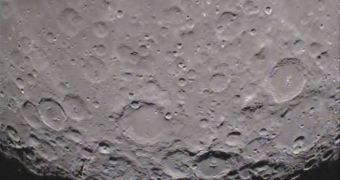Experts managing the Ebb lunar orbiter have just released the first video the spacecraft made of regions on the far side of the Moon. The probe arrived in orbit around Earth's natural satellite on December 31, 2011, and is scheduled to begin its full science mission next month.
Ebb is one of the twin NASA Gravity Recovery And Interior Laboratory (GRAIL) spacecraft whose purpose is to create the most advanced and details maps of the lunar gravitational field. The probes were recently renamed Ebb and Flow, by a classroom of students in Montana.
In fact, the entire mission has a significant outreach component. This is made obvious by the fact that the new video was collected with the MoonKAM (Moon Knowledge Acquired by Middle school students) instrument.
This is the first time that either GRAIL probe manages to collect a short clip of the dark side of the Moon. The area has generated intense speculations and debates, among scientists as well as in science-fiction and conspiracy theory circles.
What Ebb revealed in the video (which you can see embedded below) is that the other side of the Moon is more heavily cratered than the portion currently facing us. The landscape is extremely rugged, but a potential rover or lander could find a spot to land.
The short video clip only features data from Ebb, whose MoonKAM is currently being tested after spending a few months en route from Earth. Flow's MoonKAM is scheduled to be tested later. These are just secondary experiments for the mission.
“We have had great response from schools around the country; more than 2,500 signed up to participate so far. In mid-March, the first pictures of the moon will be taken by students using MoonKAM. I expect this will excite many students about possible careers in science and engineering,” Sally Ride says.
She is the first woman to ever go to space. Rise is managing the photo experiments, whereas the GRAIL mission is led by Massachusetts Institute of Technology principal investigator Maria Zuber. The spacecraft are managed by the NASA Jet Propulsion Laboratory (JPL), in Pasadena, California.
The main priority for NASA is to activate the extremely sensitive instruments that accurately measure the distance the two probes are traveling from each other. GRAIL spacecraft must maintain formation at all times, if their work is to be successful.
They will map the Moon's gravitational field by flying above multiple regions, and calculating how the distance between them changes as a result of the pull exert by the area they're flying across. These small differences in distance are then translated into gravity maps.

 14 DAY TRIAL //
14 DAY TRIAL // 